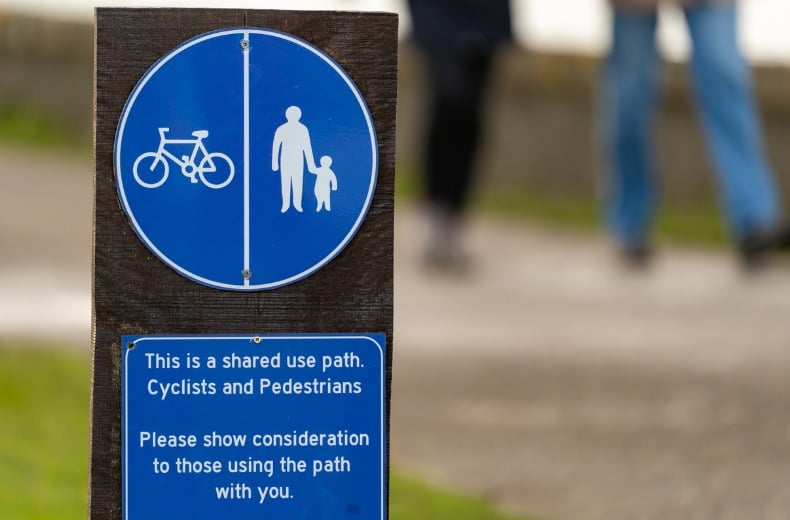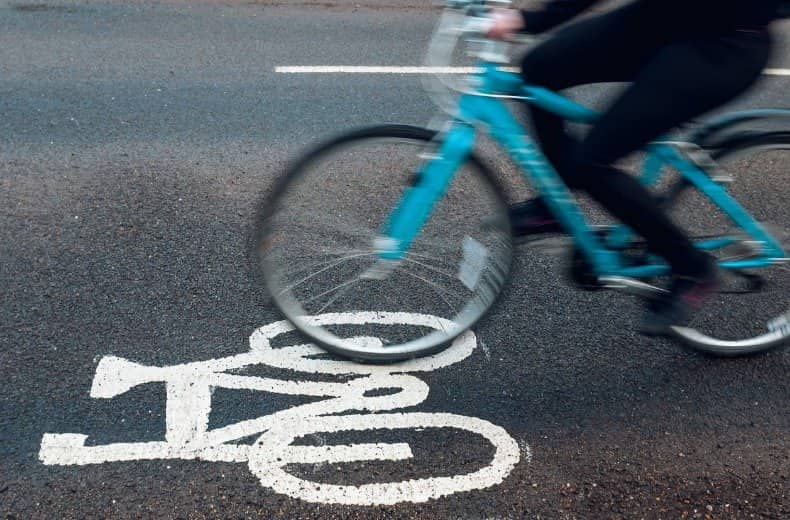RAC head of roads policy Nicholas Lyes said:
"These changes to the Highway Code are substantial, so it’s vitally important they are communicated clearly. In theory, they should make our roads safer for cyclists and pedestrians, but unless everyone is aware of them, there’s a risk of angry clashes and, worse still, unnecessary collisions.
"Nobody wants to be on the right side of the Highway Code changes but in the back of an ambulance because of confusion on the part of a driver or any other road user."
Here we take you through some of the major changes that drivers need to know about.
What's changed and why?
The revised Highway Code came into effect from 29 January 2022, following calls to protect vulnerable road users. There are a significant number of changes but, from a driver's perspective, some of the biggest are:
- creation of a new ‘hierarchy of road users’ that ensures those who can do the greatest harm have the greatest responsibility to reduce the danger or threat they may pose to others
- clarify existing rules on pedestrian priority on pavements and when crossing the road
- provide guidance on safe passing distances and ensuring cyclists and horse riders have priority when travelling straight ahead at junctions
'Hierarchy of road users'

The ‘hierarchy of road users’ is a concept that places road users most at risk in the event of a collision at the top of the hierarchy. The system is used to create a special set of rules numbered H1, H2 and H3 but importantly doesn’t remove the need for everyone to behave responsibly.
The hierarchy places road users in order from most to least at risk of being injured, like so:
- Pedestrians - children, older adults and disabled people being more at risk
- Cyclists, horse riders and drivers of horse-drawn vehicles
- Drivers of large goods and passenger vehicles, vans/minibuses, cars/taxis, and motorcycles
Rule H1 applies to all road users and says that it’s important that everyone is aware of the Highway Code and their responsibility for the safety of others. The rule reminds us that it may not be obvious that other road users may have impaired sight, hearing or mobility.

Cheaper than AA or we’ll beat by 20%^
• Roadside cover from £5.49 a month*
• We get to most breakdowns in 60 mins or less
• Our patrols fix 4/5 breakdowns on the spot

Pedestrian priority

Rule H2 applies to drivers, motorcyclists horse-drawn vehicles, horse riders and cyclists. It reads:
“At a junction you should give way to pedestrians crossing or waiting to cross a road into which or from which you are turning.”
From January 2022 a pedestrian waiting to cross should be given priority. Previously, drivers were told to give way to pedestrians if they ‘have started crossing and traffic wants to turn into the road’. The change also appears in the revised Rule 170.
Rule H2 also advises drivers on pedestrian priority at zebra crossings. Rule 195 goes into more detail and tells us that drivers:
- MUST give way when a pedestrian has moved onto a crossing
- SHOULD give way when a pedestrian is waiting to cross
Although drivers are asked to give way more often, pedestrians still have a responsibility to cross safely. A new addition to Rule 8 makes it clear that pedestrians should ‘cross at a place where drivers can see you.’
- The Highway Code - UK road signs and what they mean
- 17 things your driving instructor never taught you
- Roundabouts - how to deal with them and pass your test
Safe passing distances

Rule 163 previously said: “Overtake only when it is safe and legal to do so. You should not get too close to the vehicle you intend to overtake.” The revised rules go into more detail about what ‘too close’ means.
The following advice has been added:
- When overtaking a cyclist: Drivers should leave 1.5 metres distance when overtaking at speeds of up to 30mph. Drivers should leave at least 2 metres’ of space at higher speeds.
- When overtaking horse riders and horse-drawn vehicles: Reduce your speed under 10mph and allow 2 metres of space.
- When overtaking a pedestrian walking in the road (where there is no pavement): Allow 2 metres of space.
The guide distances should be increased in bad weather and at night. If you’re unable to overtake motorcyclists or other road users using the distances mentioned above, you should wait behind them until it’s safe to do so.
Other rules

Many of the other significant changes relate to Rule H3, which applies to drivers and motorcyclists:
“You should not cut across cyclists, horse riders or horse-drawn vehicles going ahead when you are turning into or out of a junction or changing direction or lane, just as you would not turn across the path of another motor vehicle.”
The rule applies when a cyclist is using a cycle lane, a cycle track, or riding ahead on the road. And it can also be seen in the amended Rule 160.
Also, you shouldn’t turn at a junction if it would cause a cyclist or horse to stop or swerve out of danger’s way.
Rule 72 is new for 2022 and instructs cyclists about their position in the road. There are two basic positions which cyclists should adopt depending on driving conditions.
Cyclists should ride in the centre of their lane:
- on quiet roads and streets
- in slower-moving traffic
- when approaching junctions or narrow roads
Where it is safe to do so, cyclists should allow vehicles moving faster than them to overtake, while keeping at least 0.5 metres - or further - from the kerb themselves.
Another change to the Highway Code influenced by ‘The hierarchy of road users’ is Rule 140, which now asks drivers:
- to give way to any cyclists in a cycle lane, including when they are approaching from behind
- do not cut across cyclists when you are turning or changing lane
The updated rule reminds road users that cycle tracks can be shared with pedestrians and that cyclists are not obliged to use them.
How do you feel about these changes? Leave a comment below.










